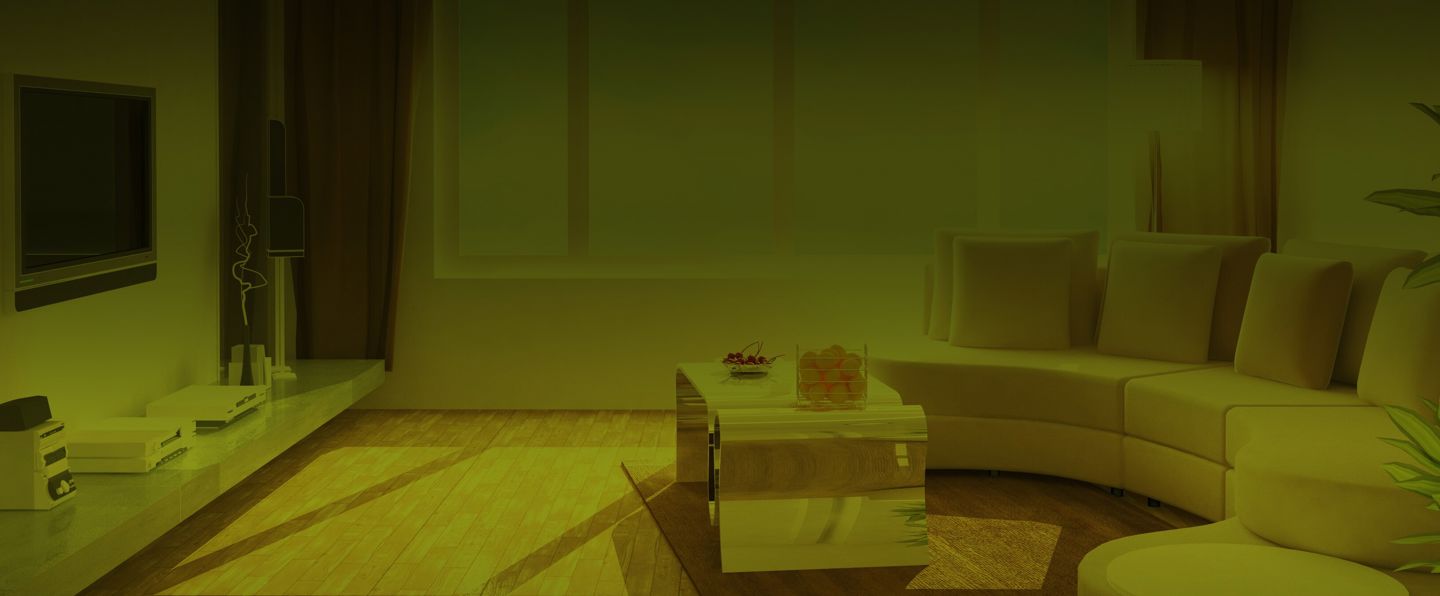Room acoustics and your home theater
The acoustics of your room and the way it is decorated can affect your sound almost as much as your home theater equipment.
Optimizing the room
A quick acoustical test: clap your hands. Do you hear "ringing" afterward? That means your room is "live," reflecting too much sound, which can spoil the surround effects.
You can do a few things to help:
- If you have hardwood floors, try placing some area rugs directly in front of the speakers.
- Close the drapes when you're watching or listening.
- Use bookshelves — with books — to help tame reflections.
- Set up a clear line of sight from speakers to listening seats.
- Have some people over. Physically speaking, we're great absorbers.
If you're lucky enough to have a room dedicated to your home theater, you have a lot more control:
- Balance hard and soft surfaces; for example, compensate for a hard ceiling with a carpeted floor.
- Pull your front speakers further into the room than your TV.
- Experiment further with speaker placement.
Consider specialized room-tuning components, such as wall diffusers and bass absorbers. Although most are not visually attractive, they can work wonders for your sound.
Home theater setup
Interconnect cables
These include all the cables you use to connect one component to another. Look for:
- High-quality physical construction
- Good-quality connectors that fit together solidly but not so tightly that they have to be forced
- Ethernet cables that are at least Category 5
- HDMI® cables that are officially labeled "High Speed"
Be aware that video cables and audio interconnects are not interchangeable, even though they may look alike.
Speaker cables
Speaker cable is essentially the same type of wire used for lamps, toasters, and other appliances. Your home theater retailer typically will offer several choices.
Here are some things to keep in mind when you buy:
- Wire gauge (AWG): a smaller number indicates a thicker wire.
- Room-friendly: choose flat or colored cable, which may be easier to hide.
- Connectors that work with your components: spade lugs and banana connectors are the most common.
Expensive cables
Some interconnects and speaker cables cost a lot per foot. Others are inexpensive: 12 AWG lamp cord, which is plenty thick, sells for less than a dollar a foot.
Is expensive cabling worth the cost? Use your best judgment. You probably don't need a $275 HDMI cable to connect a $150 Blu-ray™ player and a $900 HDTV.
The same goes for your other connections.
HDMI cables
HDMI 1.4, the latest version, adds 3D and other capabilities too. But you likely won't need new cables. If the cable specification says "High-Speed HDMI," it will work with HDMI 1.4.
One exception: HDMI 1.4 supports ethernet. If you want to use this capability and have equipment that supports it, you'll need a cable that specifies "high-speed HDMI with ethernet." The physical connector will look the same as for the non-ethernet cable.
Do you need A/V furniture?
Although any good set of sturdy shelves may do, using furniture designed for A/V equipment has some advantages:
- Hiding the wires: A/V furniture often includes channels to route and conceal wires.
- Convenience: pullout shelves in A/V furniture can make hookup vastly easier.
- Ventilation: extra space in A/V furniture can help dissipate heat from receivers.
- Media storage: keep your discs and other physical media together.
Speaker stands
We don't recommend placing speakers on any furniture that also holds any of your home theater components. The vibrations can affect the sound and shorten component life. Sometimes this placement is unavoidable, particularly with the center-channel speaker. Placing your speakers on stands is a good alternative.
Look for speaker stands that are:
- Sturdy, both for sound and aesthetics
- Stable, for maximum resistance to children and pets
- Able to situate your speakers at roughly ear height when you're seated
- Designed to hide speaker wires
See the speaker setup guide for best placement of surround speakers.
Wall mounting
If your room can accommodate it, mounting your TV to the wall is an excellent alternative to buying furniture for your TV display. Many center-channel speakers can also be mounted on a wall.
Wall mounts are frequently an ideal solution for placing the surround speakers, particularly if you have a 7.1-channel system, with speakers behind the seating area.
Accessories
Add some final touches to complete your home theater system.
Remote control
To avoid having a table full of remote controls, consider using a universal remote. Play with it in a store, if possible, to make sure it really is easy to use since designs differ.
Surge protection
Use surge protection. Be sure the surge protector is rated for the wattage of your components.
Better yet, look at a power conditioner, which includes surge protection. These units also include filtering to reduce or eliminate electrical interference. Some common sources of interference include:
- Fluorescent tubes and lightbulbs
- Dimmers
- Computers
- Appliances
All of these can add "noise" to your power line and affect your sound and picture.
Prices for power conditioners range from slightly more than the cost of a surge protector to thousands of dollars, with (usually) corresponding filtration power and control features. Note that a power conditioner may not eliminate all electrical problems.
Wireless headphones
Headphones can be very useful if you're watching or listening while someone else is reading, for instance. Only a few models have real hi-fi performance, so shop carefully.
The better-quality wired headphones will have superior sound, but the cord is inconvenient for home listening.
